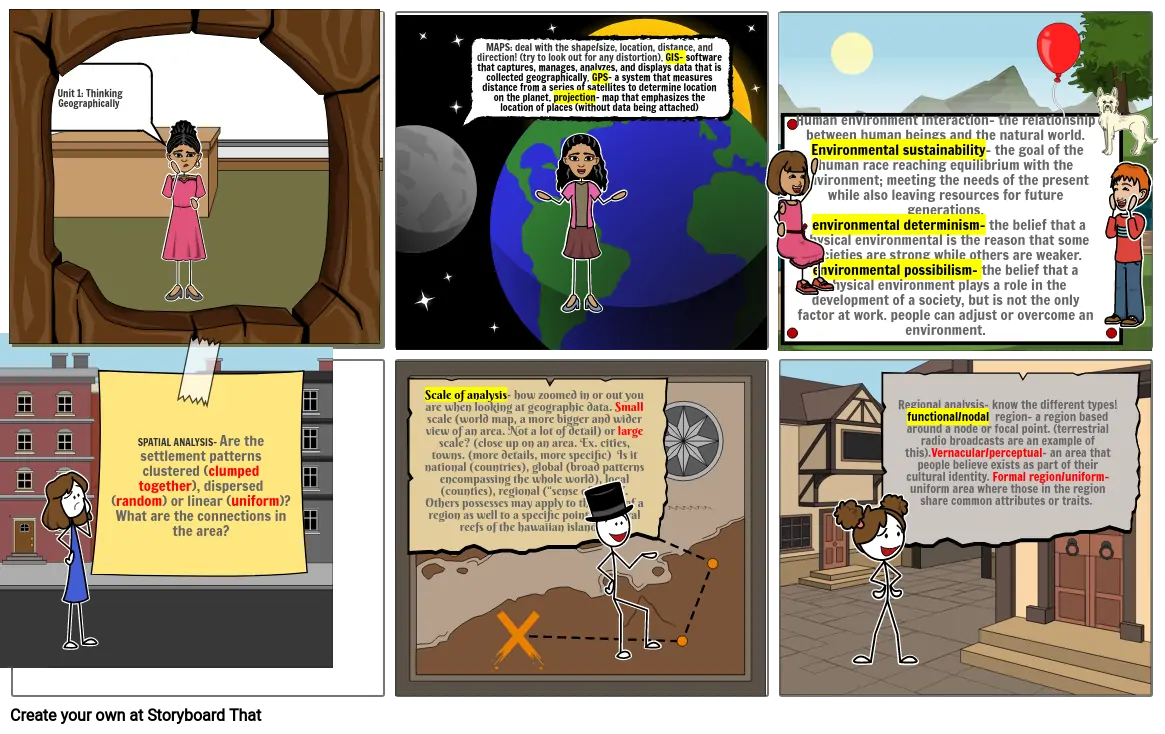APHG Children Book

Storyboard Text
- Unit 1: Thinking Geographically
- SPATIAL ANALYSIS- Are the settlement patterns clustered (clumped together), dispersed (random) or linear (uniform)? What are the connections in the area?
- MAPS: deal with the shape/size, location, distance, and direction! (try to look out for any distortion). GIS- software that captures, manages, analyzes, and displays data that is collected geographically. GPS- a system that measures distance from a series of satellites to determine location on the planet. projection- map that emphasizes the location of places (without data being attached)
- Human environment interaction- the relationship between human beings and the natural world. Environmental sustainability- the goal of the human race reaching equilibrium with the environment; meeting the needs of the present while also leaving resources for future generations. environmental determinism- the belief that a physical environmental is the reason that some societies are strong while others are weaker. environmental possibilism- the belief that a physical environment plays a role in the development of a society, but is not the only factor at work. people can adjust or overcome an environment.
-
- Scale of analysis- how zoomed in or out you are when looking at geographic data. Small scale (world map, a more bigger and wider view of an area. Not a lot of detail) or large scale? (close up on an area. Ex. cities, towns. (more details, more specific) Is it national (countries), global (broad patterns encompassing the whole world), local (counties), regional (“sense of place”. Others possesses may apply to the scale of a region as well to a specific point. Ex. coral reefs of the hawaiian islands.)
- Regional analysis- know the different types! functional/nodal region- a region based around a node or focal point. (terrestrial radio broadcasts are an example of this).Vernacular/perceptual- an area that people believe exists as part of their cultural identity. Formal region/uniform- uniform area where those in the region share common attributes or traits.
Over 30 Million Storyboards Created

